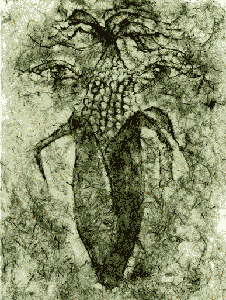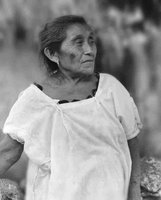
Selu the Corn Mother and Kanati the Hunter Father
A shortened version of a Cherokee tale with many woven spins
Selu lived with her husband, Kanati, and two grandsons. Everyday, she would go away from the house and return with a basket full of corn. The boys wondered where the corn came from, so they followed her one day. They saw her go into a storehouse, and they got where they could peek in and watch her.
There they saw her place her basket and shake herself. The corn started falling from her body into the basket. They saw that the grain was coming from her body. In this the boys lost their appetite and their gratitude for this life sustaining grain.
Selu could read the boys' thoughts. She told them that she must now die, and that after her death, they would need to follow her instructions so that they would continue to have corn for nourishment.
"After I am dead, you must clear some ground in front of our house. Then drag my body in a circle seven times. Then, you must stay up all night and watch."
The boys did this, but they got the instructions backwards. They cleared seven areas of ground, and drug her body twice in a circle. Where her blood dropped, corn began to grow.
Because the boys were careless in listening to the instructions, corn must now be planted and taken care of in order for it to grow. And to this day, it only grows in certain spots and not the entire earth.




